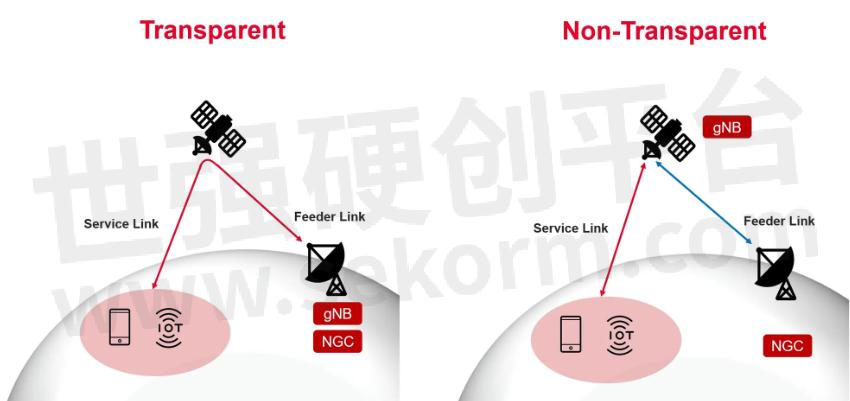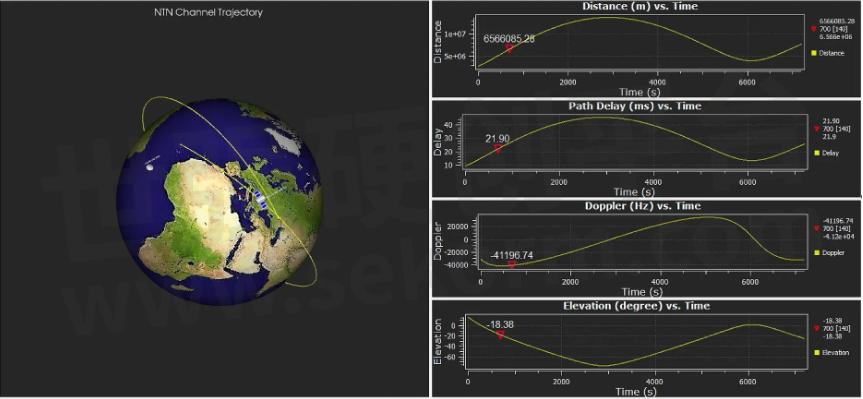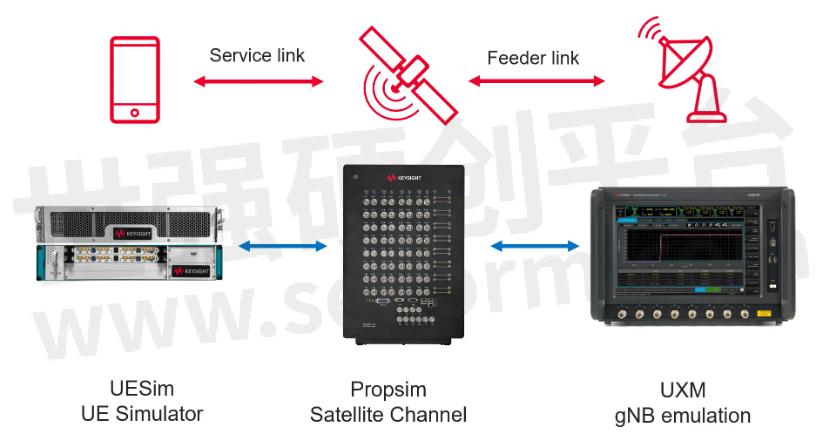Keysight’s Non-Terrestrial Networks solutions for 5G and Global Connectivity

In 1901, Guglielmo Marconi sent the first transatlantic wireless signal. Ironically, the signal was digital and not analog. The message was the letter "S" transmitted using Morse code. Since that stunning achievement, wireless technology has continued to connect people who are far apart. Although your mobile device operates wirelessly, the 5G base station (gNB), which provides the connection, is a terrestrial infrastructure. Leaving the coverage area means no service.
This is all about to change with the non-terrestrial network (NTN). 3GPP Release 17 provides the standard for 5G operators to expand their service beyond terrestrial networks. Your mobile devices will always have service, regardless of whether you are in a remote desert village or sailing the open oceans. This is a transformative technology that will extend the reach of digital communication to remote communities and increase personal freedom and security.
How will NTN work?
Non-Terrestrial Networks refer to a constellation of satellites or high-altitude platforms (HAPs) that function as relays, extending the coverage and capacity of terrestrial 5G networks. These networks have the potential to connect remote or underserved areas, provide emergency communications during disasters, and support various applications such as Internet of Things (IoT) devices.
3GPP Release 17 specifies how 5G NR can be used for NTN using the bent pipe architecture. In this configuration, the encoded signal from gNB is unaltered in the feeder link and service link. The signals may, however, be up-converted or down-converted in frequency. Because the signal is not regenerated, it is referred to as transparent payload. In contrast, non-transparent payloads require the satellite to demodulate and modulate the signal. Transparent payloads have the benefit of leveraging many of the mature NR technologies and simplifying the satellite design. Figure 1 shows the comparison of the two architectures.

Figure 1. Transparent vs. non-Transparent NTN
Benefits
The primary benefit of NTN is extended coverage. Remote and underserved regions such as rural areas, islands, and isolated communities can benefit to bridge the digital divide. NTN can also provide service to ships at sea and aircraft in flight. It's an opportunity for network service providers to operate in an otherwise untapped market and to provide premium service to customers who require service beyond the traditional terrestrial networks.
Machine-to-machine (M2M) applications, including agriculture, transportation, environmental monitoring, and asset tracking, can use NTN for ubiquitous and reliable connectivity to the Internet.
NTN adds an additional layer of resilience and redundancy to the existing 5G network. In the event of natural disasters, regional conflicts, or network outages, NTN can provide backup connectivity to ensure continued service for mission-critical communications.
Challenges
There are numerous technical and regulatory challenges in deploying NTN networks. A few of the key challenges will be explained.
Unlike terrestrial networks where the base station is stationary, NTN will have satellites in low earth orbit (LEO) moving at several kilometers per second. This introduces the Doppler shift in frequency, which varies depending on the satellite's trajectory. The varying shift in the frequency needs to be compensated by the user equipment (UE), which in turn needs to know about the satellite orbit. The distance through the atmosphere that the signal has to travel to reach the user is much greater, leading to a higher path loss. The network's performance, as measured by latency and capacity, is also affected by distance and path loss. A combination of these factors and a greater interference susceptibility present a challenge to design engineers. Simulation software and digital twins can help mitigate many of these challenges.
Spectrum allocation, location of the ground stations, compliance with national and international regulations, and complex licensing approvals create a hurdle to deploying NTN across multiple jurisdictions.
A successful deployment of NTN will require cooperation amongst satellite operators, network service providers, government agencies, and standardization bodies to overcome regulatory barriers.
Simulation of satellite uplink and downlink
Simulation software is useful for any electronic design, but its importance in NTN design cannot be overstated. It allows the designers to mitigate the risk of costly mistakes before the operator launches the satellites. The performance of the system can be validated by modeling and simulating the signal integrity of the uplink and the downlink under varying atmospheric and orbital conditions.
Simulation allows designers to mimic real-world scenarios, such as satellite position, atmospheric conditions, Doppler effect, and interference. Figure 2 shows the 3D trajectory of a satellite, with the parameters, distance, path delay, doppler, and elevation angle plotted. Features found in simulation software include trajectory generation, satellite link model, terrestrial link model, and antenna array.
Beyond the deployment phase, simulation software is useful in monitoring, provisioning, and troubleshooting. As networks evolve, simulation software can answer what-if scenarios.

Figure 2. Simulation software showing satellite trajectory
Digital Twin of NTN
During Mobile World Congress Barcelona 2023, Keysight demonstrated an end-to-end test solution for NTN, which included video streaming over a live 5G NTN connection. Figure 3 shows the setup of the demonstration. Integrating hardware emulators replicates the real-world signal along the communication path and becomes the digital twin of NTN. Designers can use the digital twin to test any equipment in the system quickly and reliably, with the flexibility to alter the testing parameters. A critical part of NTN testing is emulating the effects of the moving satellite, signal interference, and path loss. PROPSIM channel emulator can emulate these and other distortions.

Figure 3. A digital twin of NTN
Conclusion
NTN promises to bridge the digital divide by providing ubiquitous communication services to remote and rural areas and enabling previously impossible applications. Beyond the technical achievements, greater inclusivity will help foster economic development and empower individuals. Businesses will find new applications to manage their operations more efficiently and reliably. It is a catalyzing technology that will accelerate innovation and growth in many industries.
- +1 Like
- Add to Favorites
Recommend
- Keysight Enables HTC to Validate Performance of O-RAN Base Station Optimized for 5G Private Networks
- Keysight and Capgemini Validate 5G New Radio RAN Solution for Non-Terrestrial Networks
- Keysight‘s Open RAN Test Solutions Selected by Auden to Validate Open Radio Access Network Solutions
- Keysight Technologies Acquires Quantum Benchmar, Augmenting Keysight‘s Quantum Portfolio
- Keysight Enables AI-LINK to Accelerate 5G Private Network Deployments in Smart Warehouses
- Keysight’s Participation in O-RAN Global PlugFest Spring 2022 Enables Ecosystem to Speed Open RAN Technology Development and Specifications Maturity
- Keysight and Synergy Advance 5G O-RAN Development
- Keysight First to Gain GCF Approval of Cases for Validating 5G New Radio mmWave Devices in Standalone Mode
This document is provided by Sekorm Platform for VIP exclusive service. The copyright is owned by Sekorm. Without authorization, any medias, websites or individual are not allowed to reprint. When authorizing the reprint, the link of www.sekorm.com must be indicated.





























































































































































































































































































































































































































































































































































































































































































































































































































































































